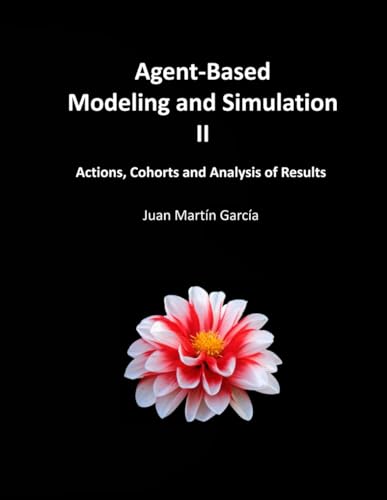EDITION 2025
In the book "Models based on Agents I" you have learned to:
1.- Install the software and create a model.
2.- Define the equations, using functions and tables.
3.- Simulate the model by viewing the numerical and graphic results.
4.- Create attributes, collections and aggregates.
5.- Add references.
6.- Define temporary parameters for the simulation.
7.- Import initial data.
8.- Import time series of data.
In this book II, you learn to:
1.- Consolidate the import of data.
2.- Create new entities with actions and triggers.
3.- Design lots and cohorts of entities.
4.- Do Sensitivity Analysis.
5.- Optimization of the results.
6.- Calibration of the variables.
7.- See the results on a X-Y diagram.
8.- Integrate the model with GIS files.
External Data Files
Formats
Import initial data
Import time series data
Model: Covid Expansion
Model: Oil Spill
Model: Oil Spill 2
Model: Oil Spill 3
Actions and Triggers
Action Kind Command
Model: Traffic Light 2
Action Kind Self Delete
Action Kind Create
Model: Traffic Light 3
Model: All My Cars
Model: Mars Landing
Model: Horse Breeding 8
Model: Horse Breeding 9
Model: Housing Promotion
Model: Stock Index
Modeling Cohorts
Independent cohorts
Dependent cohorts
Cohorts age-dependent
Cohorts with initial values
Model: Star Wars
Model: Star Wars 2
Model: Qantas and Emirates Airlines
Sensibility Analysis
Model: Sales Analysis
Model: Landing in Mars 2
Model: Dragons and Castles 2
Model: Cheese Shop 3
Optimization
Model: Sales Analysis 2
Model: Sales Analysis 3
Model: Dragons and Castles 3
Model: Stock Index 2
Calibration
Model: Sales Analysis 4
2D Results
Model: Rain in Seville
Model: The Great Wall of China
Model: Covid Expansion 2
Model: Dragons and Castles 4
Model: Playing Checkers
Results in GIS maps
Model: Valencia and the Sea
Model: Flying from Madrid
Model: Flying from Madrid 2
Model: Flying from Madrid 3
Model: Oil Spill 4
Model: Discovery of America
Model: Merry Christmas
